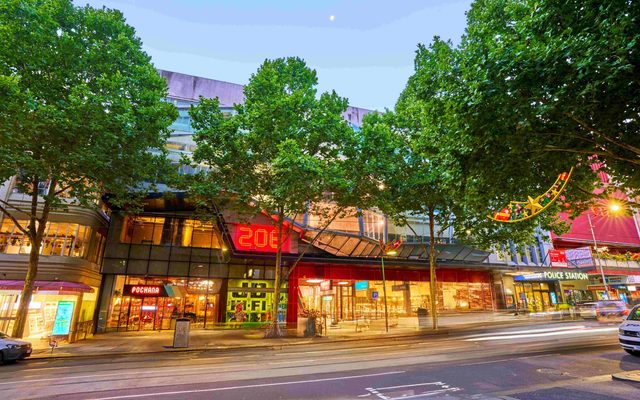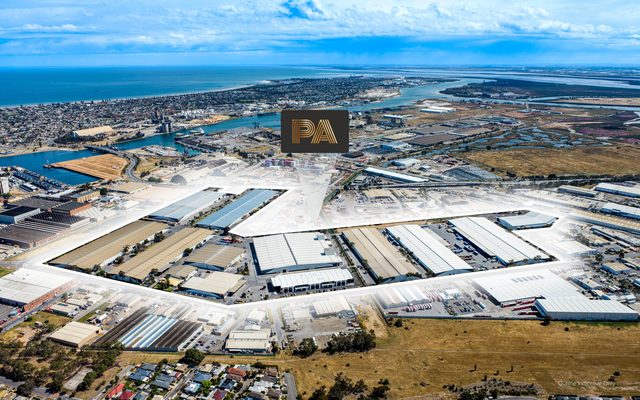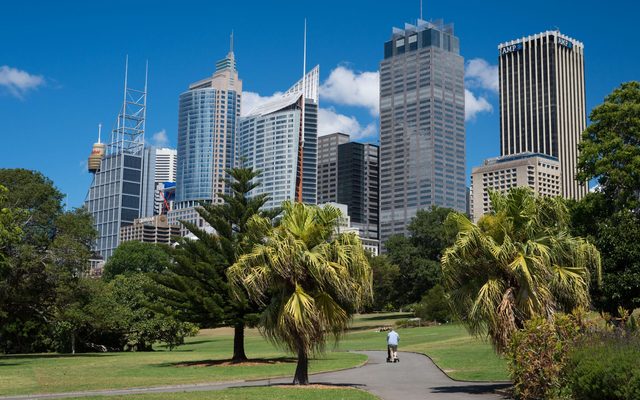This article is from the Australian Property Journal archive
NATIONAL home values were up a further 0.9% in October and look likely to reach a new record high by mid-November, despite a slowing rate of growth.
CoreLogic’s national Home Value Index (HVI) was up 0.9% after a revised 0.7% increase in September, reflecting a rise of 7.6% in the HVI since the low of January this year.
The index is now just a half a percentage point below the record high recorded in April 2022.
“The latest figures on mortgage stress show that rising interest rates are causing a large increase in the number of mortgage holders considered ‘At Risk’ and further increases will spike these numbers even further. If there is a sharp rise in unemployment, mortgage stress is set to increase even more,” said Tim Lawless, research director at CoreLogic.
Housing values continue to rise across most capital cities, even with the slowdown in the quarterly pace of growth, with the three months ending June 2023 seeing a 3.7% rise in home values compared to the 2.6% rise seen in the three months to October.
“The slower rate of appreciation can probably be attributed to a combination of higher advertised stock levels alongside stretched affordability,” said Lawless.
“With an acceleration in the flow of new listings coming onto the market, it’s unlikely buyer demand will be able to keep pace as we move through spring amid high interest rates and low sentiment.”
For the month ending 31 October, dwelling values were up in each capital city, excluding Darwin which saw a fall of 0.1% for the month.
Perth, Brisbane and Adelaide continued to lead the capitals in value increases at 1.6%, 1.4% and 1.3% respectively.
While Sydney and Hobart were up 0.8%, Melbourne up 0.5% and Canberra up 0.1%.
Brisbane housing values posted a nominal recovery in October, offsetting the previous 8.9% decline in in values to reach a new record high.
While Perth and Adelaide also reached new record highs after recovering from marginal downturns earlier this year.
Sydney is still sitting 2.2% below its January 2022 peak, with Melbourne down 3.7% on its March 2022 peak and Hobart down by the most significant margin, sitting 11.6% below peak levels.
Meanwhile, regional market values are still falling behind the capital cities. With the combined regional index up 0.7% in October compared to 0.9% in the combined capital cities.
“Despite the slower pace of growth, every rest of state region recorded a rise in home values over the month, except Regional Tasmania where values were flat,” added Lawless.
“Similar to the trend in the capitals, regional Queensland, WA and SA are showing stronger conditions with each of these rest of state regions at record highs in October.”
Regional Victoria housing values are sitting nearly flat, having dropped by 0.2% over the rolling quarter, and remaining 7.2% below the May 2022 peak.
New capital city listings picked up over the winter months and the beginning of spring and are now sitting nearly 12% up on levels this time last year.
“New listings are trending up and are likely to be boosted by increased listings from distressed sellers, including investors with rental yields falling further below mortgage rates. Measures of mortgage stress are continuing to rise,” noted Shane Oliver, head of investment strategy and chief economist at AMP.
“Mortgage interest payments as a share of household income are rising to record levels and scheduled payments are already at a record according to the RBA.”
Even so, total listings are still lower than this time last year and the previous five-year average.
“Total capital city stock on the market has increased by 5.1% since the start of spring, a clear indication that buyer demand isn’t keeping pace with the flow of new listings,” said Lawless.
While vendor activity has seen a bump in recent months, capital city home sales are still only just above the five-year average, with regional sales steadily at just below-average levels.
“With vendor activity gathering some momentum while buyer activity slows, it’s likely selling conditions will continue to rebalance towards buyers, especially in those cities where advertised supply levels are high,” said Lawless.
“In markets where demand and advertised supply are more evenly balanced, it’s logical to expect price growth to slow down. In other markets such as Perth, where listings are almost -45% below the five- year average while sales activity is almost 25% above average, prices are rising at the fastest pace since March 2021.”
“The rebound in prices reflects a far worse than expected shortfall of supply relative to underlying demand for homes as immigration rebounded driving the fastest population growth rate since the 1950s at the same time that the supply of new dwellings slowed,” said Oliver.
“This accentuated already tight rental markets, forcing rents up & driving renters to consider buying. So, demand improved but supply remains weak with total listings below normal. Talk of rising prices and shortages further boosted demand from less interest rate sensitive buyers.
At the same time, rental vacancies in October are now at a new low of 0.9% for the combined capital cities and 1.2% for the combined regional markets.
While nationally, rental listings were are down 35.5% on the previous five-year average over the four weeks ending 29 October and down 16.1% compared to the same time last year.
“We aren’t seeing any signs of a supply response in rental markets just yet. Rental listings are consistently trending lower while rents have been rising every month for the past 39 months,” added Lawless.
Though supply is still extremely tight, the pace of rental growth is slowing and has broadly become more varied across markets.
With the rolling quarterly rate of rental growth across the combined capitals dropping from 3.1% in the three months to the end of May to 1.8% over the most recent three-month period.
“House rents are once again rising faster than unit rents in Sydney and Melbourne, which may be tied to the seasonality of university semesters and foreign student arrivals,” said Lawless.
The report also found that gross rental yields may have reached their peak, with values continuing to climb and the rate of rental growth slowing.
Nationally, gross yields peaked between February and April at 3.73% and have trended lower since before hitting 3.69% in October.
“Despite a significant rise in rents over the past few years, taking into account the high cost of debt, along with higher maintenance and holding costs, finding a positively geared investment property is akin to finding a needle in a haystack,” added Lawless.




